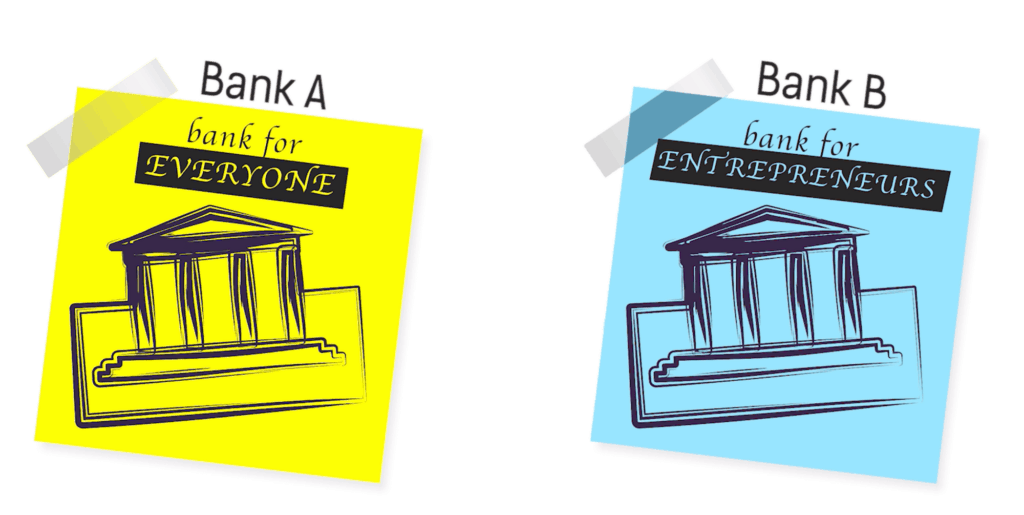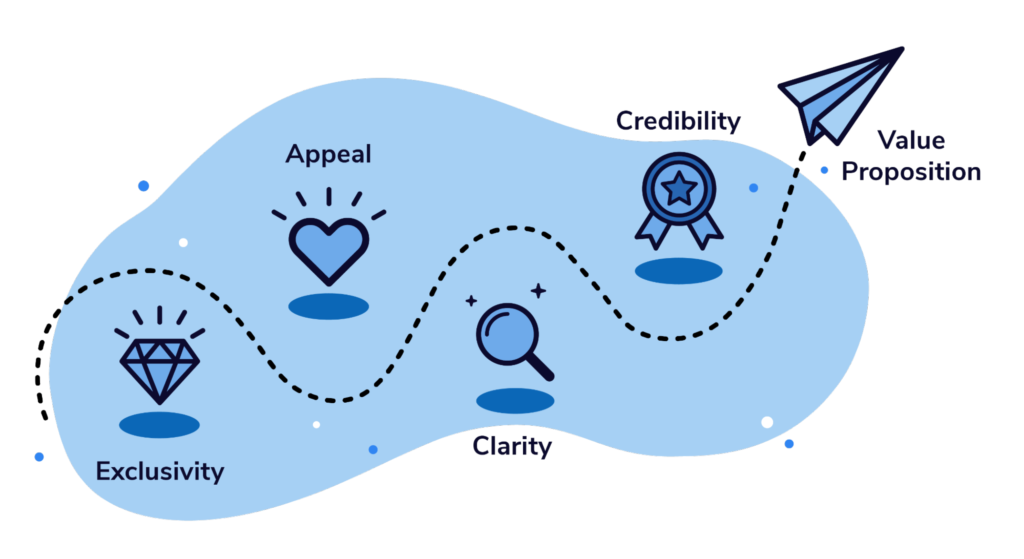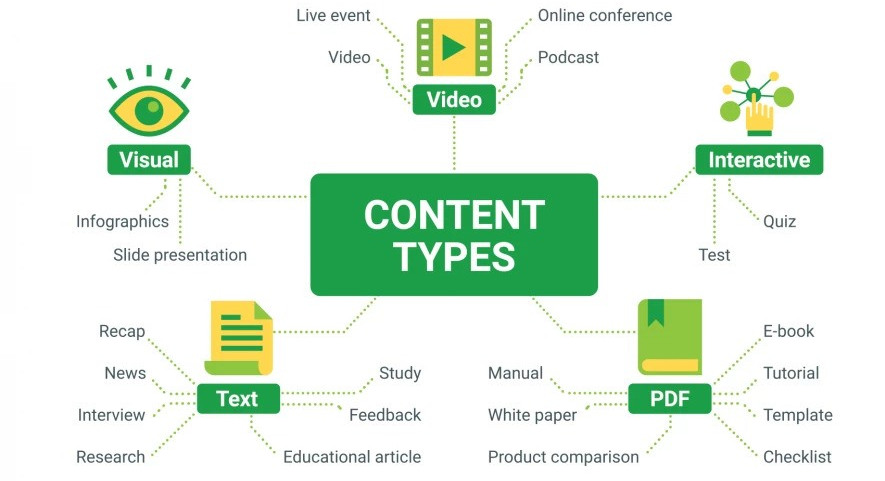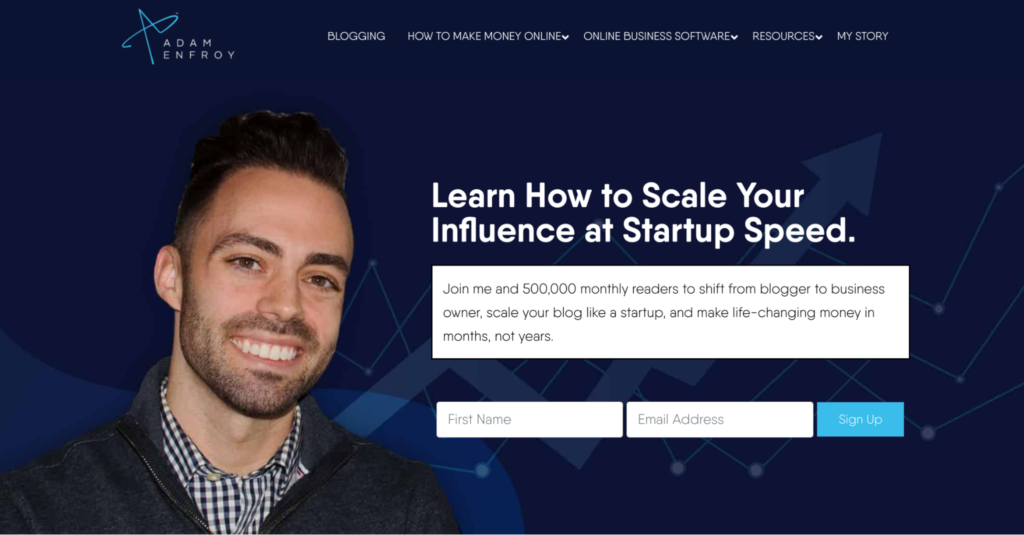Developing a personal brand is not an easy task. It takes time and effort, and there’s no guarantee of success. Ask anyone who has built one—from Kim Kardashian to Oprah—and they’ll tell you that a personal brand is a long-term investment. The question is: is it worth it?
I believe that it is, and in this post, I’ll break down how to develop a personal brand by implementing the latest digital strategy services that helps you reach the next level in your career.
We’ll dive into the importance of defining your goals upfront, how to choose your niche, and how to formulate your growth strategy. Your personal brand is what you want to be known for. Isn’t it about time you figured out exactly what that is?
In this article
Why Should You Develop A Personal Brand?
Personal brands help you stand out in your niche, allowing you to express your ideas and knowledge in a unique way. This can lead to an abundance of opportunities not made available to others, since there’s only room for a handful of people at the top of any given field.
Whether you’re job hunting, seeking other career opportunities, or want to gain notoriety as a thought leader in your niche, there are many situations in which having a recognizable personal brand can be beneficial.
One of the great things about personal brands is that they’re industry agnostic: whether you’re a yoga teacher, a marketing consultant or a YouTuber, any professional can reap the benefits of what a strong personal brand has to offer.
Your personal brand will be with you anywhere you go, setting you apart from the rest. A personal brand means that people will recognize you by the way you dress or the colors you use. Sometimes, without your knowledge or consent, a meaningful symbol will become associated with your name. As your brand’s popularity grows, your fans will feel more connected to you and have more to look forward to. To define your brand successfully, an independent marketing consultant can provide you with the assistance you need, especially if you’re having trouble doing so on your own.
Your brand can help you build your professional network, attract more clients, get featured by the press, and more. Just make sure not to view the timeline of a personal brand in reverse: you should start building your brand before you garner influence, not the other way around.
How To Develop Your Own Personal Brand
Now that you have a bit more knowledge around the power of personal brands, here’s a three-step process for developing your own.
1. Define Your Goals
To develop your personal branding strategy, you want to be crystal clear about your goals and objectives. Why are you putting so much time into developing a personal brand, anyway? What do you want out of it all? Are you looking for fame, or do you just want some additional passive income? If you’re not quite sure why you feel compelled to start building your personal brand, these questions may offer you some clarity:
- What will be different about your life if your personal brand is wildly successful?
- In an ideal world, what would your personal brand offer you?
- What do you want now that you don’t currently have?
People with goals perform at a higher level than people without them, so don’t take this step lightly. When you have a goal, you have carved a direct path to your destiny. And this is the same with creating a goal in building a personal brand. Here are some sample goals you may want to pursue:
- Land three 5-figure consulting clients
- Boost your sales numbers by 20% this quarter
- Build your professional network by giving a talk in a public forum
Of course, you may have less career-oriented goals for your personal branding journey, and that’s fine, too. If what you really want is to be asked to speak at conferences, write it down. If you find that you’re driven more by the sense of accomplishment that accompanies these more tangible outcomes, write that down, too. There’s no right or wrong when it comes to goals, but do make sure you’re choosing objectives that resonate deeply with you. Your goals will vary depending on who you are, but having a set of objectives that are meaningful to you are essential to keeping you on track.
2. Choose Your Niche
Next, you’ll want to get clear on exactly what it is you intend to offer. If your answer is “Plenty!”, then you’re thinking about things the wrong way. The wider you cast your net in the beginning, the harder it will be for you to build your personal brand. Conversely, the more specific you get about what you intend to provide, the smoother your journey is going to be.

To really home in on your niche, pry into what makes you different from other people in your industry. Asking these sorts of questions may help you get closer to the answer that feels right to you:
- What are you uniquely positioned to do that others cannot do?
- What do you enjoy doing that others do not?
- What unique experiences do you have that others do not?
These questions help because they guide you to the places where you’re different from your peers, not similar to them. If you want to develop a valuable personal brand, you’re going to have to stand out from the crowd.
Another way to choose your niche is to look at the people who have already shown interest in your work, and then cater specifically to them. This is a little more reactive than the open-ended questions you asked yourself a moment ago, but it works, too.
You cannot be a jack of all trades in this massive digital world we live in. It would be best to master one specific niche and be proficient in that so people will look at you as the expert and trust that you know what you’re talking about. If you specialize in so many things, it can confuse many people and become a huge turn off. Focus on what you’re passionate about and what you can share.
To do this, treat yourself like a business defining its customer persona. Start with demographics: your audience’s age, gender, location, level of education, and income level. Then move on to psychographics: their personalities, lifestyles, interests, beliefs, and values. Dig into all of these things until you can define exactly who your audience is going to be. Once you know your audience, you’ll know how to develop your content, which will make building your brand much easier.
One underappreciated benefit of choosing a narrow niche is that it makes you a more attractive partner for sponsored brand deals. A highly relevant small audience is more valuable to brands than a larger, more general audience, so choosing a defined niche increases your value as an influencer, which could spark a lucrative additional income stream for you. The bonus here is that once you establish yourself among a small number of highly relevant followers, your reach will naturally expand outward.
3. Develop Your Strategy
When I talk about your personal branding strategy, I’m referring to the three main components you need to consider. Let’s look at each of them one by one.
What is your value proposition?
If you want people to follow and trust you, you need to have a clear value proposition: a reason for them to choose you over everyone else. Ideally, you’ll be able to capture that value proposition in just a couple of words. If that sounds difficult, that’s because it is. But a succinct, powerful value proposition can make the difference between an offer that confuses your audience and one that lights them up.

If you’re not sure what value proposition you can offer, these questions may help:
- What message do I want to share with my audience?
- How can I help them?
- How can I make their lives easier?
It’s crucial to understand your audience’s problems and provide them with solutions to those problems. This creates a bond between you and them, and is another reason why you should be as specific as possible when choosing your audience: solving a specific group’s problems is doable, but solving everyone’s problems is nearly impossible.
It’s a good idea to create free, helpful content first before trying to sell. Many of the most successful personal brands out there swear by providing the majority of their content for free and only charging for those things that are unique or extremely high-value. Free pieces of content act as entry points that bring new people into your audience. Great free content you can offer includes the stories of your journey and major mistakes, what you’ve learned along the way, and advice for situations you’re knowledgeable about.
No one is the same as you, which means that no one can offer exactly what you have to offer. Capitalize on your unique experiences and struggles and don’t shy away from being yourself.
How will you express yourself?
Once you’ve clarified your value proposition, you need to choose how you’ll reach your audience. A typical personal branding strategy today involves content marketing, but that content can come in many forms, so you’ll want to consider the platform, the place, and the format in which you choose to express yourself. Whether you go with blog articles, videos, podcasts, webinars, social media, online courses, or other forms of content, you’ll want to plan your content release wisely, ideally through the use of a content calendar.

Not surprisingly, most personal brands revolve around a website. Your website is the welcome card that you provide to your audience, so you’ll want it to capture you and your offer as effectively as possible. Here are a few things you’ll find on a well-constructed personal brand website:
- A clear headshot (smile!)
- A strong value proposition
- One or more call to actions
- A personal story
A great example of a personal brand website comes from blogger Adam Enfroy. Immediately upon landing on Adam’s homepage, visitors are greeted with a smiling headshot, a clear value proposition (“Learn How to Scale Your Influence at Startup Speed”), a clear call to action (join his email list), and a link to Adam’s story. It’s no wonder Adam has built such a loyal following of readers: his website has done an excellent job hitting on the key components of strong personal branding.

How will you expand your reach?
The third component of your branding strategy is your growth strategy, which is how you’ll bring your message to a larger audience. Every year, new methods of audience growth crop up, though with a long-term outlook, it may be a better idea to invest in those channels that stand the test of time, such as:
- Social media
- Guest blogging
- Partnerships
- Public relations
Social media has become so popular lately that some personal brands are skipping the website altogether in favor of building their brand exclusively on platforms like Instagram and YouTube. There are risks to this approach—being deplatformed and having the algorithm turn against you are just two of many—but this also allows you to move much more quickly, and can be a great revenue stream given how much brands are willing to pay YouTubers and Instagrammers for sponsored content. For some people, then, putting all their eggs in the social media basket makes sense, though it’s certainly not the right move for everyone.
There are, of course, other marketing strategies that will help you grow your audience. A well-executed SEO plan can deliver a steady flow of relevant visitors to your website, which you can massage into loyal followers. Some big-time personalities like Tai Lopez used paid advertising to build their tribes. There are no shortage of ways to develop your following, so explore the channels that resonate with you and lean into those that show promise.
Common Mistakes
There are a few common mistakes people make when building their personal brands. These mistakes cause confusion among your audience and make your journey more difficult than it needs to be. Here are two of the biggest to be aware of.
Inauthenticity
Authenticity is crucial in developing a personal brand. If you aren’t being yourself, your audience will instinctively pick up on it and move on to someone else who’s ready to be real with them.
The key to being authentic with your audience is to be open with them. Share your values, your story, and what you plan to help them do—and then live up to all that. If you do it consistently, your audience will recognize that you are who you say you are, and you’ll win their long-term trust and loyalty.
Drifting Out Of Your Niche
It can be tempting to follow current trends and change your content based on what’s happening in the world, but this should be done with caution. If you feel the need to touch on trending topics, always talk about them through the lens of your value proposition so that you don’t dilute your core message. Stepping outside of your niche will only confuse your audience, and if you do it too frequently, they’ll lose sight of your value proposition altogether.
What’s more, if you rely on any algorithms to deliver you traffic—such as the Facebook, Instagram, or YouTube algorithms—posting content that’s outside of your niche will confuse the algorithms and hurt your engagement over the long run. If you’ve been posting consistently about entrepreneurship and then suddenly start posting about politics, the algorithm won’t know who your target audience is, and as a result will show your content to far fewer people than it normally would.
As a general rule, stay within your swimlane and try to avoid getting distracted with anything that doesn’t correspond to your niche.
Conclusion
Successful personal brands, just like the people behind them, are unique. They capitalize on the idiosyncrasies of our personalities, and play those up in a way that empowers and helps others to achieve their goals. They clarify who we are and what we stand for, and let the world know what we’re an expert in. Your personal brand is what makes you, you.
Implementing the process above will not be easy, but it will be worth it. Once you’ve defined your goals, chosen your niche, and developed the strategy you’re going to follow, the road will become less bumpy. Trust in the process as your audience grows. The rewards you seek await you.



